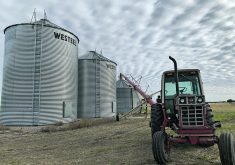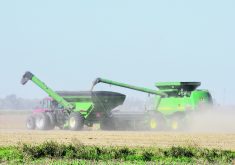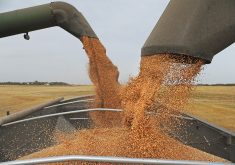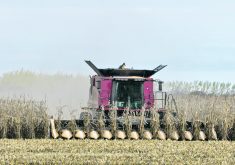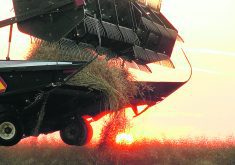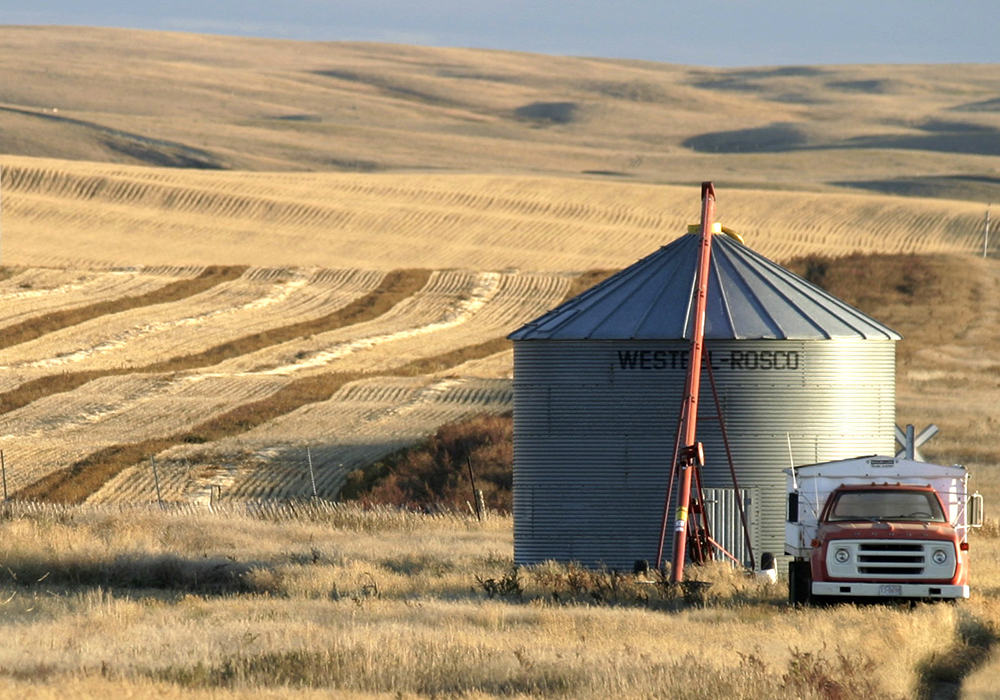Manitoba
Favourable weather conditions are helping harvest operations. The winter wheat harvest is wrapping up and growers are now seeding the crop, while progress continues on spring wheat, barley, oat and canola crops. Yields are average to above average with good quality.
Soybean and corn crops require a few more weeks to reach maturity.
Southwest
The spring cereal harvest is wrapping up with yields reported to be above average. Yields are estimated at 45 to 65 bushels per acre and grades are either No. 1 or No. 2. Protein is averaging 12 to 13 percent.
Read Also

Message to provincial agriculture ministers: focus on international trade
International trade stakeholders said securing markets in the face of increasing protectionism should be the key priority for Canada’s agriculture ministers.
Barley is yielding 65 to 90 bu. per acre with above average bushel weights and lower protein levels. Initial reports of yields on oats are in the 90 to 150 bu. an acre range.
Canola has been swathed with initial yield reports of 30 to 65 bu. per acre.
Disease and early season insect damage and frost injury have lowered yields in some fields.
Field peas yields are above average. Corn and soybean crops are maturing in warm temperatures.
Dry and hard soil has delayed winter wheat and fall rye seeding.
The remainder of the alfalfa harvest will be harvested following the first frost.
Northwest
Growers are making preharvest herbicide treatments and swathing and combining crops.
Yield reports on spring wheat range from 30 to 80 bu. per acre. Quality is good and protein content is averaging 13.5 percent.
Oat yields are 70 to 140 bu. per acre. Canola is yielding 15 to 60 bu. per acre.
Lower yielding canola crops were hurt by excess moisture early in the growing season.
Early maturing soybean varieties are showing colour change. White mould is noted in some fields.
Yield on greenfeed is above average and straw quality is excellent.
Central
Hail losses on canola following recent storms are 20 to 40 percent and subsequent rain has delayed harvest operations.
The edible bean harvest has begun with some growers in the southern part of the region seeing yields higher than 2,000 pounds per acre.
Spring wheat is yielding 40 to 80 bu. an acre. Protein levels are 12 to 14 percent. Some spring wheat is being downgraded to No. 2 because of colour loss.
Barley is yielding 75 to 110 bu. per acre, oats 90 to 160 bu. an acre and canola 25 to 60 bu. an acre.
Soybean fields in the most western part of the region are the furthest behind and will require the most time to mature.
Eastern
Some growers are more than half finished harvest.
Winter wheat yields are 70 to 80 bu. per acre, spring wheat 45 to 60 bu. and barley 85 bu. per acre. Oats are averaging 100 to 125 bu. per acre and canola 40 bu. per acre.
Corn, soybean and sunflower crops continue to mature.
Winter wheat seeding is underway with some growers noting dry seedbed conditions.
Interlake
Most cereals are harvested with excellent yields reported. Canola swathing has been delayed on some fields because of green seed.
Soybeans crops are expected to advance rapidly in dry conditions.
Dry soil will delay some winter wheat seeding. A late canola harvest will also affect winter wheat acres.
Excellent yields are reported on greenfeed.
Saskatchewan
Warm weather has helped harvest operations progress quickly across the province, and they are now outpacing the five-year average for this time of year.
Growers in southwestern Saskatchewan are the furthest along, and above-average yields are reported in most regions.
South
Rain has delayed harvest operations across southern Saskatchewan, although generally warm weather has helped crop development. Progress is furthest along in the southwest, where growers are approaching the halfway mark of harvest. Growers across the region are seeding fall cereals.
Reports are of above average yields across the region.
Crop reporters are noting a large grasshopper population and minor damage. There are reports of ergot in some durum samples. Bleaching of swathed cereals is expected in some areas.
Central
Harvest operations are progressing with good weather. Crops have advanced enough in eastern areas to alleviate concerns of significant frost damage.
Above average yields are expected across the region.
Some parts of the region are dry and could use a rainfall to help pastures and winter cereal seeding.
North
The region has received warm, dry weather just as growers begin combining.
Growers in northwestern regions are further along.
Above average yields are expected, although excess moisture in some parts of the northeast will affect some growers.
Some winter cereals have been seeded in fields that were too wet to seed in the spring.
ALBERTA
Warm weather has helped harvest.
Disease pressures are reported, including sclerotinia, stripe rust and fusarium headblight, following a humid and wet growing season. However, expectations are for yields to outperform last year’s crop.
South
The Medicine Hat area received light rain in September.
Insect activity hasn’t been a major concern. Flea beetles are observed in canola fields, but damage will be minimal. There are reports of sclerotinia, blackleg and grey stem in some canola fields.
Central
The region has seen dry, warm weather, with dry soil conditions reported in some areas. Good yields have been reported.
There has been some rain in September, including more than 30 millimetres in the Airdrie area.
North
Crop development in northern Alberta has lagged other parts of the province. The region has received generally warm and dry weather, but some areas have received light rain throughout the harvest period.
Disease pressure, including sclerotinia, is noted in canola crops.
Peace
Above-average yields are expected in the Peace, where swathing and combining is underway.
Soil moisture is good and most areas have continued to see dry, warm weather in September.


